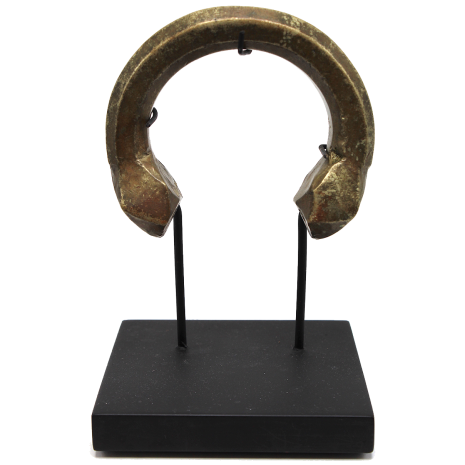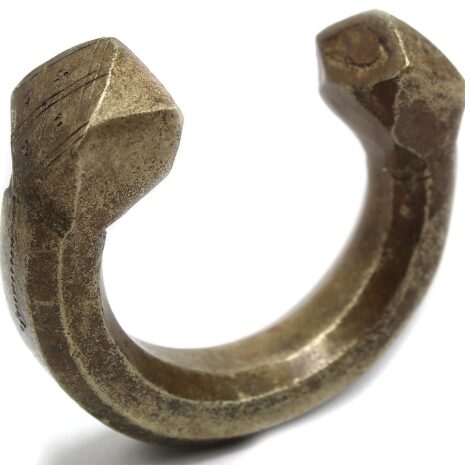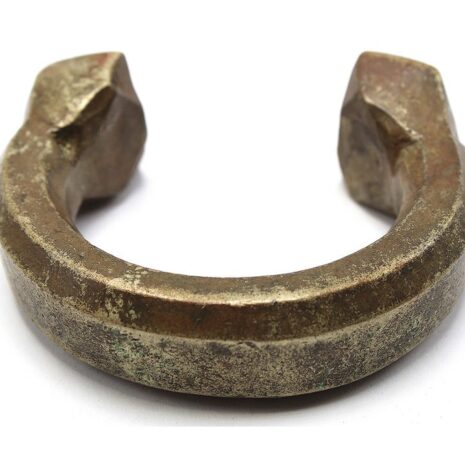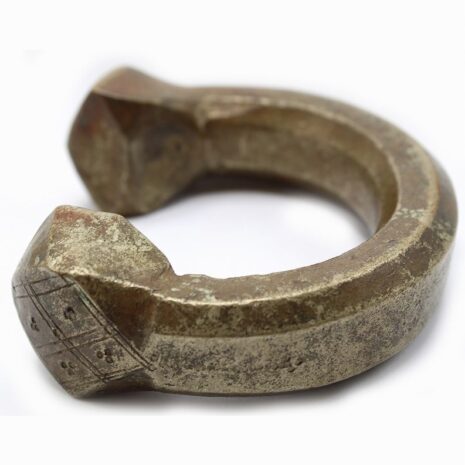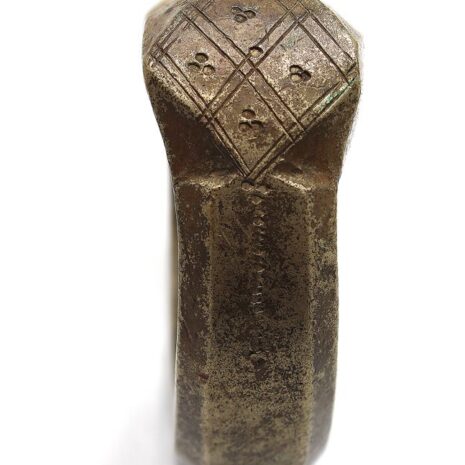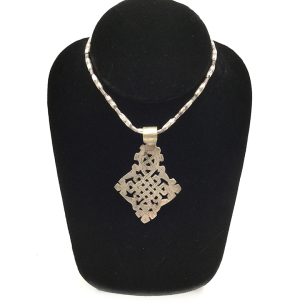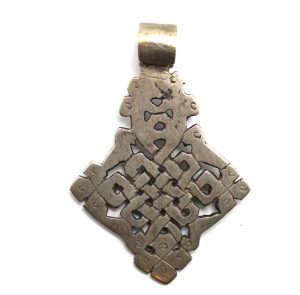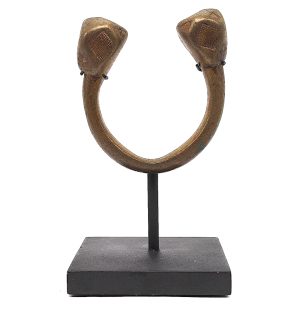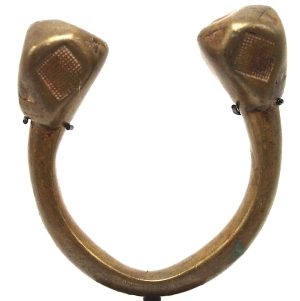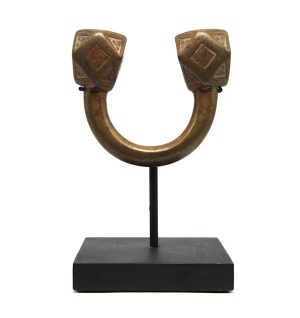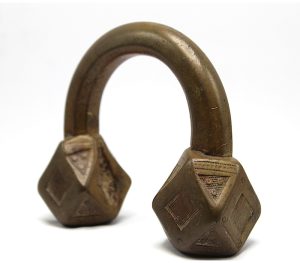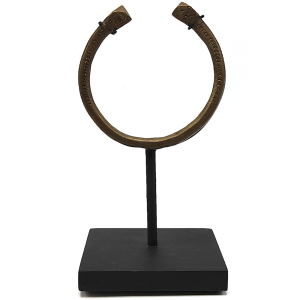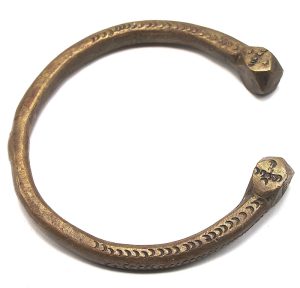Antique Tuareg Manilla Currency/Slave Bracelet, North/ West Africa (3149TKM) $275
$275.00
H: 3.375” W: 3.25” Thick: 1.25” Circum: 5.75” | FREE SHIPPING
Tuareg wrist and ankle manillas made from sand moulds were usually shaped in a large C. Recognized for their unique etched designs, symbols, motifs and faceted knob ends, each is a one-of-a kind creation. This bracelet has massive finials with 12 facets containing detailed hand-etched and hammered designs including raised circles. It is in excellent condition with appropriate signs of age and use and comes with a wood and metal stand.
Sources
Helen E. Hagan and Lucile Meyers, Tuareg Jewelry: Traditional Patterns and Symbols, Xlibrus Corporation, 2006.
Description
Historically nomadic tribal peoples who traversed the Sahel region and Saharan-Africa, for centuries the Tuareg created African metalwork and jewelry in the form of arm and ankle bracelets that were symbols of wealth and status, fashion adornments worn ceremonially for births, coming of age, marriages and burials, used to trade or barter for animals and domestic and agricultural goods and as a medium of exchange where there were no banks or conventional currency exchange systems. Easily portable bracelets were an important form of currency especially for nomadic populations, and largest ones likely served to store value rather than a piece for jewelry. Various Tuareg group used unique African Art symbols and decorative motifs passed down for generations. Dassine Oult-Yemma, the Poet of the Ahaggar, explained that sticks indicate legs of men, camels and other animals, crosses or x’s indicate guiding signals at roads and circles have a spiritual meaning. “We start from our heart, and move from circle to circle ever more widely, into the Circle of Life, like the horizon circles around you and your herd.” (Hagan and Meyers). During the colonization of Africa in the 1500s, the British, French, Portuguese, Belgians and Dutch appropriated African metalwork bracelets, manufactured their own versions in Europe and called them manillas. They became the currency for the slave trade and were referred to as slave bracelets, slave trade money and slave currency used to purchase slaves for plantations in the Americas. Prohibited for use by foreign traders under the Manilla Currency Ordinance of 1919, during1940s and 50’s they were confiscated and melted down. Manillas are still worn by slave descendants in the Caribbean as family treasures to pass on to future generations.
Click here for the Blog Manillas: Former African Trade Currency.
Additional information
| Place of Origin | Africa |
|---|---|
| Period | Antique (1200-1920) |
| Date | 19th Century |
| Materials and Technique | Bronze/brass/copper alloy |
| Dimensions (inches) | H: 3.37" W: 3.25" Thick: 1.25" Circum: 5.75" |
| Dimensions (metric) | 16 oz, H: 8.56 cm W: 8.255cm Thick: 3.275 cm Circum: 14.60 cm |
| Weight | 1 lb |
| Condition | Excellent, fine patina demonstrating age and use |
| Item Number | 3149-TKM |
| Shipping Box Size |
